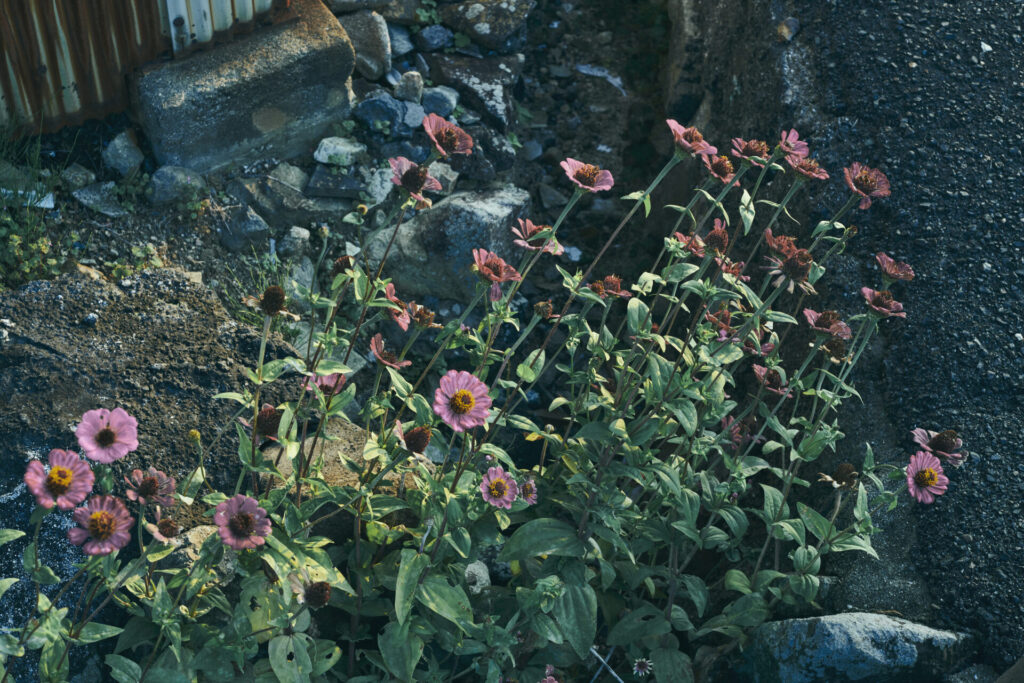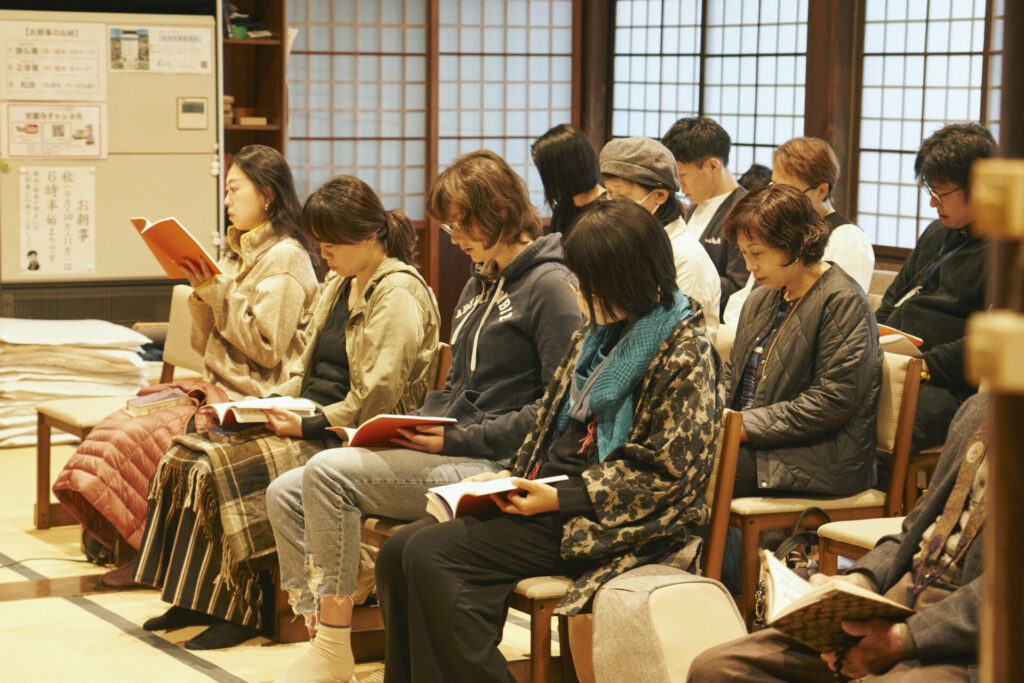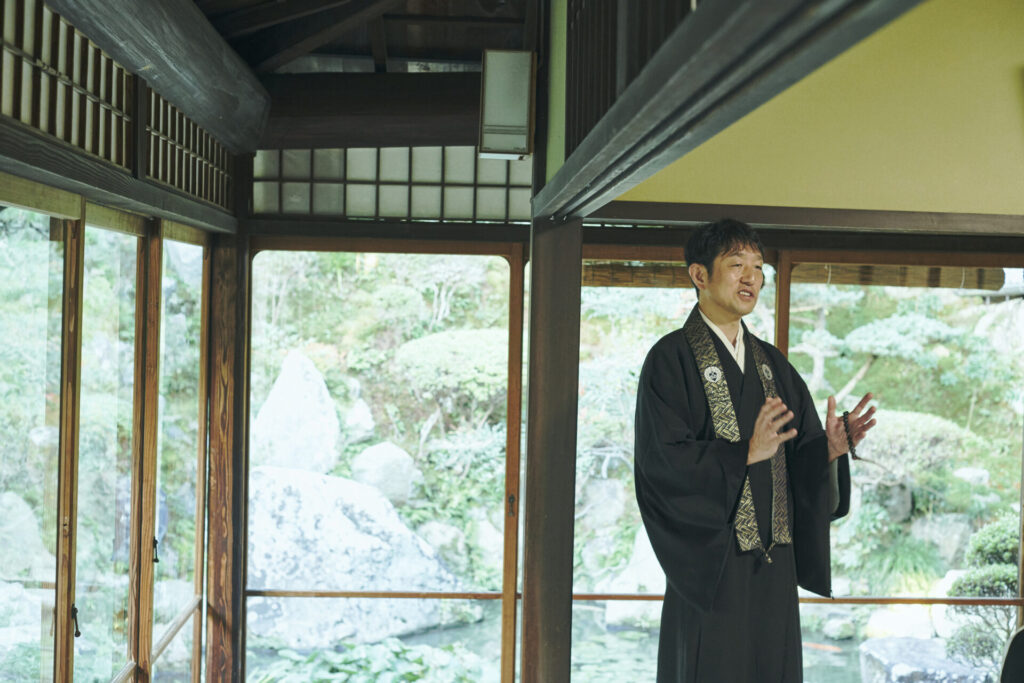
Continuing to Be a Place of Comfort for the Community: Preserving Kogenji Temple with the Local People, 450 Years After Its Founding

海谷 真之
Masayuki Umitani
Etajima [Hiroshima]
Masayuki Umitani
Born in Etajima City, Masayuki Umitani enrolled at Ryukoku University after high school. He returned to Etajima at the age of 25 to work at his family’s temple, Kogenji. In 2011, he officially became the temple’s head priest. Together with his wife Makiko, who serves as bōmori (temple matron), he devotes himself to a wide range of community activities centered around the temple. He continues to seek new ways for Kogenji to remain a spiritual home for many.
With a 450-year history, Kogenji Temple celebrated the 200th anniversary of its main hall’s reconstruction in 2017. Located within walking distance from the port, the temple warmly welcomes residents of Etajima, visitors from the city, and tourists with a gentle sea breeze. Masayuki Umitani serves as its head priest. In addition to conducting Buddhist memorial services and rituals, he organizes events such as the “Etajima Handmade Market” and updates traditional practices like the daily morning service (asaaji) and temple school (terakoya). In this interview, he shares his thoughts on the challenges facing the island, the evolving role of temples, and what he hopes to pass on to the future.
Growing the Temple’s “Fan Base”
“I was born the eldest son of a temple family and was cherished by our parishioners from a young age. Even as a child, I thought, ‘Someday I’ll follow in my father’s footsteps and become the head priest,’” Umitani recalls.
In 2011, he returned to his hometown of Etajima and succeeded his father as head priest. Kogenji’s origins date back to 1585 (Tensho 13). For over 450 years, the temple has passed down the teachings of Jodo Shinshu Buddhism through generations.

“During the Showa era, the island had many more residents and temple members. Traditions and customs could be maintained more easily. But now, with population decline and newcomers to the island, things have changed significantly. Of course, preserving the temple buildings is a challenge, but I also want to convey the joy of people coming together and sharing time. That’s why I’ve started to think about preserving traditions while also taking on new initiatives.”

by uniting those around him. When I first started helping out at 25, we often clashed. But after becoming the head priest myself, I came to understand the feelings and struggles my father must have had.”
Terakoya, Market Events, and Morning Services: Creating Reasons to Visit
One of his first steps was to revitalize the terakoya, a long-standing community learning program for children.
When Japan’s modern education system was established in the Meiji period, temples often served as early schools. Continuing that tradition, Kogenji had long been a gathering place for children under the previous head priests.
“We now host terakoya sessions once a month, and have expanded into various related events,” says Umitani.
During summer vacation, the frequency increases to twice a week. Children work on homework in the main hall, attend special lectures by guest speakers from various fields, or participate in overnight stays where they can experience the morning service—a unique learning experience outside the home.

Although there were 50–60 children attending during Umitani’s youth, the number declined to just one or two at one point due to the island’s shrinking population. Still, stopping the tradition was never an option.
“I genuinely enjoy these activities myself. When I have fun with all my heart, the kids respond with big smiles. When they leave happy, they often bring friends the next time. Sometimes I’ll even say, ‘We’re doing temple cleaning next time—bring your parents!’ It can be intimidating for people in their 30s or 40s to visit a temple, but if their children think of it as a fun and welcoming place, that impression can spread to their parents too.”
Nowadays, around eight children regularly attend, with more joining during events. Umitani and his wife Makiko personally look after them, sometimes with help from local volunteers. These interactions also build bridges between generations and neighbors.

In addition to the terakoya, Umitani launched the “Etajima Handmade Market” (Eda-jima Tezukuri Ichi) to encourage more people to visit the temple. The idea came from a local resident who suggested holding a market on temple grounds.
With his wife Makiko leading the way, they formed an organizing committee and invited vendors, quickly drawing enthusiastic support. On event days, the temple grounds and parking lot fill with booths selling coffee and handmade crafts.
As the closest temple to the port, Kogenji offers easy access from Hiroshima City. Visitors often come for a seaside stroll and stop by the temple along the way.
The market also features “nigomi,” a traditional dish from Hiroshima and a favorite of Jodo Shinshu founder Shinran. Made by simmering vegetables and red beans, this vegetarian stew reflects the local custom of avoiding meat on Shinran’s monthly memorial day—a time when markets would traditionally close.
“This event also helps preserve and share Etajima’s unique cultural customs,” Umitani explains.
Now held twice a year, the handmade market is in its 12th year as of 2024, with the 23rd event recently completed. It’s grown in popularity, even attracting vendors from Kansai and Shikoku, and was once featured in the Chugoku Shimbun.
“By holding Dharma talks between performances and sales, we offer visitors who don’t normally come to temples a chance to engage with Buddhist culture.”
Beyond these new efforts, Umitani remains committed to the temple’s traditional daily morning service, or asaji. This unique regional custom—held every day, open to anyone—is rare even within Japan. Many temples across Etajima continue this tradition.

Kogenji has never missed a single day, even during the COVID-19 pandemic. Each morning, around 10 people gather—some daily, others on specific days or to mark a loved one’s memorial.
Facing west toward the Amida Buddha and returning east through the temple gate bathed in morning light, visitors are moved by the setting.
Since two years ago, the morning service has been livestreamed on YouTube, attracting more interest and allowing broader access.

“Even those with health issues or living off-island can join from home. Some who discovered the service online have later visited the temple in person. At another temple, someone I’d never met before told me, ‘I watch your morning services.’ That really affirmed what we’re doing. I was initially unsure how it would be received, but it’s helped introduce Kogenji to many people.”
Each participant has their own reason for attending—from maintaining early rising habits to seeking solace after the loss of a loved one.
“The temple is a place that welcomes all purposes and allows us to share time together. I hope people feel free to join us, even through livestream.”
Preserving a Space Where People Can Simply Be
“I hope visitors to the temple experience something like ‘temple bathing.’ Just as people soak in different baths at a hot spring to relax, they should feel free to immerse themselves here in whatever mood they bring—solemn, joyful, reflective. There’s no need for formality. Just be yourself in this space.”
Kogenji remains open and welcoming to both children and adults. Events will continue to ensure visitors always feel comfortable and at home.
“While organizing events is important, I also believe in connecting with each individual. A head priest I deeply respect used to walk around the neighborhood every day, visiting each house and saying hello. I may not be able to go that far in today’s world, but I want to carry that spirit forward. It’s the head priest’s duty to ensure the temple stays rooted in the community.”
What Do You Want to Pass on to the Future?
Finally, we asked Umitani what he hopes to carry forward for future generations.

“My mission is to pass down both the structure of Kogenji and the teachings of Buddhism—a spiritual home for people. That’s what being a head priest means. But in a changing world, there’s no clear answer. In the end, I want to keep doing what I can—sweeping, trimming the garden—small, steady acts that ground us in the present.”
Through this interview, one could feel the gentle warmth behind his calm words. In Etajima, where the sea and sky meet, Kogenji Temple will surely remain a source of comfort for many years to come.
